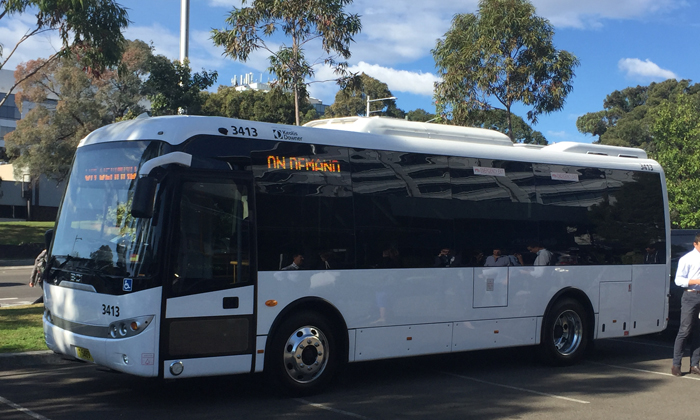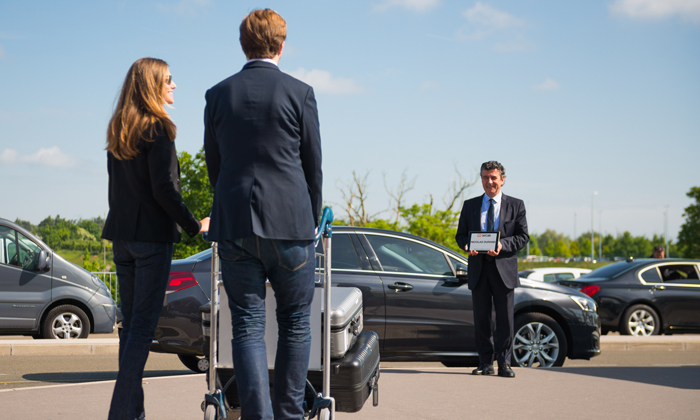How working with private transport can improve public transport
- Like
- Digg
- Del
- Tumblr
- VKontakte
- Buffer
- Love This
- Odnoklassniki
- Meneame
- Blogger
- Amazon
- Yahoo Mail
- Gmail
- AOL
- Newsvine
- HackerNews
- Evernote
- MySpace
- Mail.ru
- Viadeo
- Line
- Comments
- Yummly
- SMS
- Viber
- Telegram
- Subscribe
- Skype
- Facebook Messenger
- Kakao
- LiveJournal
- Yammer
- Edgar
- Fintel
- Mix
- Instapaper
- Copy Link
Posted: 19 October 2017 | Rachael Harper (Intelligent Transport) | 2 comments
With the advent of technology and innovation, on-demand transport can now offer services that are not only cheaper for operators, but are more user-friendly and offer the answer to the first- and last-mile problem. We speak to Kara Livingston, Marketing Director for Keolis Group about the company’s new on-demand transport option in New South Wales, in Australia, as well as merging public and private transport services to offer the best possible on-demand transport option for passengers.


“On-demand transport services have always existed in some form (it’s typically called dial-a-ride or demand-responsive transport),” says Kara when we spoke to her. “But with the advent of digitalisation it opens up the possibility to completely revolutionise the concept and to use it to make mobility solutions more accessible for all customer groups.”
Indeed, Keolis is well-versed with dial-a-ride, with around 50 of these services currently operated in France as well as services in Australia and in the U.S., but when Transport for New South Wales issued a relatively open tender and selected 10 on-demand pilot services with an emphasis on innovation and technology, Keolis was keen to get on-board: “This is the first time Keolis was able to offer a demand-responsive service within New South Wales. We’re investing across all our territories in the digitalisation and innovation of all modes of transport more so this made sense.”
Integrating services
Dial-a-ride services are an important aspect of public transport. One that is necessary for the people who use them. However, the service is not without its faults. In fact, Keith Prince AM, Rapporteur and Chair of the Transport Committee spoke to Eurotransport in July 2017 about the limitations of the TfL dial-a-ride services in London. To combat these limitations, he believes that service providers need “to integrate services and set up a single booking system to cover the different service providers. In time, integration will provide an opportunity to introduce personal budgets, which would allow users to take control over the journeys they make and who provides them.”
Keolis also believes that integrating transport modes and services, both traditional public transport and innovative on-demand transport services such as car-sharing and ride-sharing, is the future of transport. Improving on the dial-a-ride services to offer passengers in rural areas the opportunity of completing their entire commute without having to use their personal cars is an important part of the mobility mix.
“Traditional dial-a-ride demands that passengers book in advance so the operator can organise when the bus will come,” Kara tells us. “Passengers typically need to book this transportation a few hours or even the night before. They’re also typically limited to fixed routes and timetables, and offer a limited choice of services.”
Keolis’ solution is to use technology to optimise not only on-demand services themselves, but also the very nature of booking the service. Passengers no longer need to dial a ride, but book one using an app, just minutes before they want to make their journey – like they would with a taxi.
Keolis’ app offers passengers a similar experience to a taxi firm’s app, showing them what time their transport will arrive, its licence plate number and even what vehicle it will be. The only difference is that it will be shared transportation – but surely this means passengers’ journeys will take longer than if they use a taxi?


Keolis Downer will be using shared on-demand transport to improve mobility in rural areas
Keolis’ new on-demand offering can identify which passengers need the service, where the most convenient pick-up point would be to minimise detours and also the walking time to a stop. “This new type of on-demand transportation offers sophisticated optimisation tools for matching vehicles and passengers,” Kara explains. “Using new technology based on intelligent algorithms to calculate the optimal routes, Keolis Downer can group the demand for the same vehicle more effectively.
“Take Macquarie Park for example in Sydney – it’s a big, diverse zone and if you ran a fixed bus service through there it would be much more constrained, and people would need to walk far to a fixed route at fixed times,” she continues. “The joy of new advanced algorithms on the apps is that you can optimise a route, meaning transport that isn’t taken too far out of passengers’ way. It can conveniently pick up passengers by taking small detours that won’t delay passengers by more than five- minutes.”
The idea is to bring people to shared transport”
With convenient shared transport readily on offer, we can’t help but wonder if this means the end of taxi services, but when we ask Kara whether she hopes this new service will stop people using private transportation in favour of public transportation, her answer surprises us: “The two aren’t really in competition. The idea is to bring people to shared transport – whether that’s using private or public transport or a mixture of both.”
Using mixed modes of transport
For Keolis Downer, the idea is to encourage people to use public transport by providing mobility services that are adapted and integrated to key transport hubs or main areas of interest to make public transport accessible to all – including more convenient transportation to people who could not previously have it and to offer a good alternative to people using their private cars individually.
“We analysed key areas in NSW where we thought there was potential to improve the public transport offer,” Kara says. “Northern Beaches is a significant residential area which doesn’t have sufficient transport services to answer the needs. Transport for New South Wales plans to launch a new bus rapid transit service called B-Line, to deliver a quick connection to the key areas along the Northern Beaches in November 2017 and we felt we could support this by implementing a feeder service to this new bus service to increase patronage.
“The Northern Beach trial has a partnership with a car sharing company called GoGet and we will be using their vehicles, four-seater Sedans.”
It’s very much a first- and last-mile product…”
Keolis’ vision of the future isn’t the end of cars, it’s the end of a reliance individuals in private cars by offering a form of transportation that is just as, if not more, convenient: “If you take the Northern Beach example again,” she continues, “it’s very much a first- and last-mile product, where people may previously have been constrained to drive because the public transport isn’t adapted. Now they don’t have to worry. They simply book an on-demand car to take them to the B-Line service, so they can do a complete commute on shared transport.


Keolis is keen to reduce congestion by offering a mixture of public and private transport to passengers
“The idea is for people not to need to rely so much on personal cars and not contribute to congestion or emissions.”
With air quality and congestion being a main concern for the majority of operators (Eurotransport reported in June 2017 that “research [has shown] that worsening traffic congestion is a major contributor to the 40,000-50,000 early deaths a year in the UK from air pollution”) Keolis is keen to help relieve congestion and improve air quality by encouraging shared transport, no matter what type of vehicle they are using: “Keolis currently has a partnership with Via, who offer real-time ride sharing services in the US, to offer the ride-share service Plus by LeCab in Paris,” Kara says. “Increasingly these services can fulfil transit agency needs for rural areas and last mile connectivity, as well as private sector shared taxi services in high density city centres. This service genuinely provides an alternative to your own car.”
Subcontracting to taxi firms
Furthermore, the company is keen to help its fellow transport operators saying: “The idea with new on-demand services is that operators can choose to subcontract to local taxi firms. It helps taxi companies too – we’re pushing demand that way at perhaps hours of the day when they have less custom, so we’re happy to work with all transport options.”
There’s no doubt that on-demand transport is important. It offers a form of flexible transport that buses and trains simply can’t provide while offerings passengers in rural areas the chance to complete their commute without the need of their own private car. But with advances in technology, these services no longer need to be inconvenient and time-consuming. In fact, they can be as convenient as a taxi whilst being cost-effective and emission-friendly by utilising technology and effectively demonstrating intermodality.
So is this the future of shared transport? Kara thinks so: “The mixing of these traditional private operators like taxis with more traditional public transport is very much part of the future of shared transport,” she concludes. “Pretty much every continent is looking at this.”
Related topics
Air Quality, Business Models, Intelligent Transport Systems (ITS), Multimodality, On-Demand Transport, Passenger Accessibility, Passenger Experience, Travel & Passenger Information
Related cities
Australia
Related organisations
Keolis Group
Related people
Kara Livingston









Nice. Thanks for sharing the above information. Transportation system is very important in execution of successful trading as well.
Very good article. This can give innovative solutions that today are not available in South America, I translated and shared it. thank you very much, Valerio Quintero